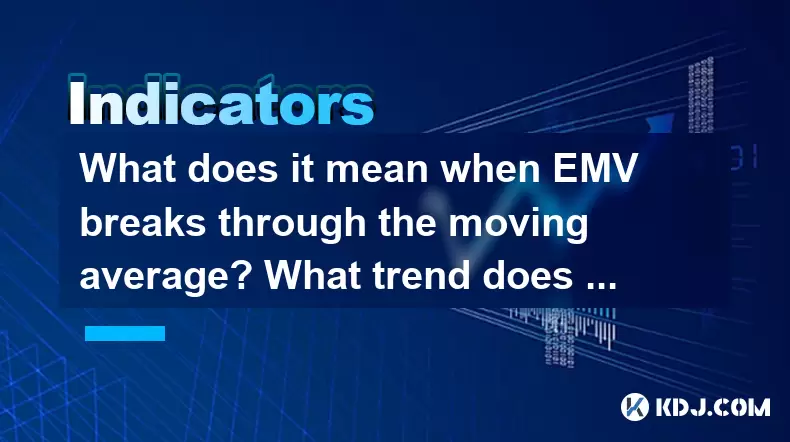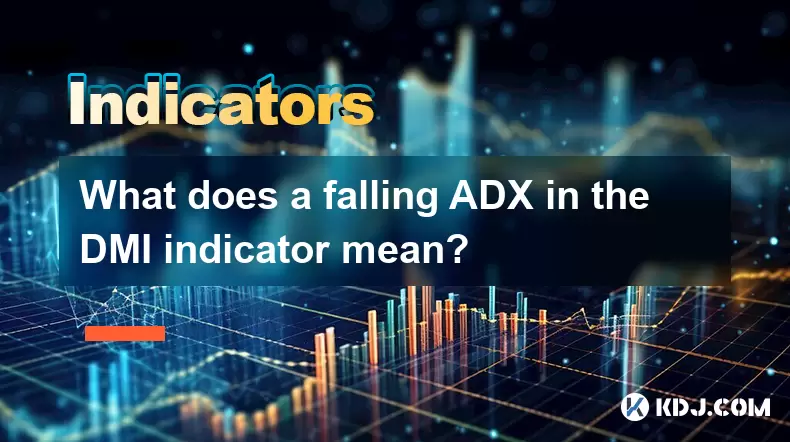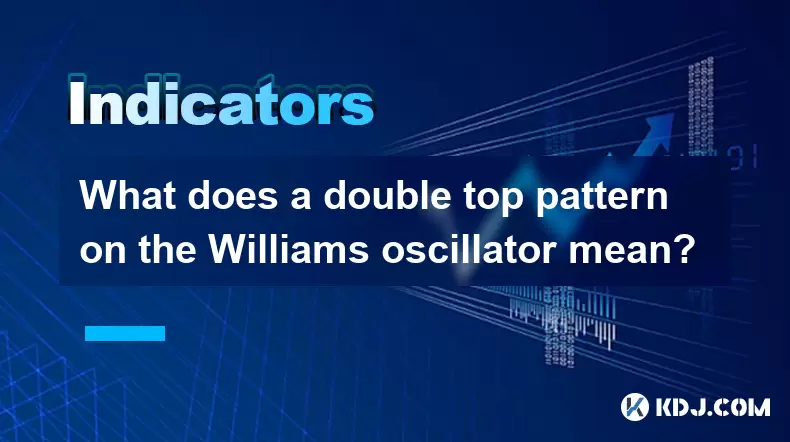-
 Bitcoin
Bitcoin $116700
0.24% -
 Ethereum
Ethereum $3973
4.34% -
 XRP
XRP $3.283
7.68% -
 Tether USDt
Tether USDt $1.000
0.01% -
 BNB
BNB $789.8
2.27% -
 Solana
Solana $176.2
3.31% -
 USDC
USDC $0.9999
0.00% -
 Dogecoin
Dogecoin $0.2238
5.14% -
 TRON
TRON $0.3389
-0.51% -
 Cardano
Cardano $0.7907
4.03% -
 Stellar
Stellar $0.4527
10.02% -
 Hyperliquid
Hyperliquid $41.07
4.27% -
 Sui
Sui $3.794
1.77% -
 Chainlink
Chainlink $19.49
10.40% -
 Bitcoin Cash
Bitcoin Cash $580.9
0.74% -
 Hedera
Hedera $0.2617
4.32% -
 Avalanche
Avalanche $23.41
3.67% -
 Ethena USDe
Ethena USDe $1.001
-0.03% -
 Litecoin
Litecoin $122.4
1.38% -
 Toncoin
Toncoin $3.364
1.49% -
 UNUS SED LEO
UNUS SED LEO $8.988
0.37% -
 Shiba Inu
Shiba Inu $0.00001295
2.82% -
 Uniswap
Uniswap $10.62
5.75% -
 Polkadot
Polkadot $3.922
4.46% -
 Dai
Dai $1.000
0.01% -
 Bitget Token
Bitget Token $4.494
2.15% -
 Monero
Monero $268.0
-1.30% -
 Cronos
Cronos $0.1523
3.68% -
 Pepe
Pepe $0.00001127
4.43% -
 Aave
Aave $285.4
4.85%
What does it mean when EMV breaks through the moving average? What trend does it mean when it falls below the moving average?
EMV indicator measures price movement ease; breaking above moving averages signals bullish trends, falling below indicates bearish momentum in crypto trading.
Jun 01, 2025 at 11:49 am

When discussing the EMV (Ease of Movement) indicator in the context of cryptocurrency trading, understanding its interaction with moving averages is crucial for interpreting market trends and making informed trading decisions. The EMV is a technical indicator that measures the "ease" of price movement by comparing the relationship between price changes and volume. When the EMV breaks through or falls below a moving average, it can signal potential shifts in market momentum and trend direction.
Understanding the EMV Indicator
The Ease of Movement (EMV) indicator is designed to identify how easily prices can move in a given direction. It calculates the relationship between the price range of a period and the volume during that period. The formula for EMV is as follows:
[ \text{EMV} = \frac{\text{(High + Low)/2 - (Prior High + Prior Low)/2}}{(High - Low)/\text{Volume}} ]
A positive EMV value indicates that prices are moving upward with relative ease, while a negative value suggests downward movement with ease. The EMV is typically plotted as a line on a chart, and traders often use it in conjunction with moving averages to gauge market trends.
EMV Breaking Through the Moving Average
When the EMV breaks through the moving average, it can be an indication of a strengthening trend. This breakout can signal that the market is gaining momentum in the direction of the EMV. Here's how to interpret this scenario:
Bullish Signal: If the EMV line crosses above a moving average, such as the 20-day or 50-day moving average, it suggests that the market is experiencing bullish momentum. Traders might interpret this as a signal to enter long positions or to hold onto existing long positions.
Confirmation of Trend: The breakthrough can serve as a confirmation of an existing upward trend. If the price of a cryptocurrency has been steadily increasing and the EMV breaks above the moving average, it reinforces the likelihood that the upward trend will continue.
Potential for Increased Volatility: A breakout of the EMV above the moving average can also indicate that the market is becoming more volatile, as it suggests that prices are moving more easily and with greater volume.
EMV Falling Below the Moving Average
Conversely, when the EMV falls below the moving average, it can indicate a weakening trend or a potential reversal. Here's how to interpret this scenario:
Bearish Signal: If the EMV line crosses below a moving average, it suggests that the market is experiencing bearish momentum. Traders might interpret this as a signal to enter short positions or to exit existing long positions.
Confirmation of Trend: The fall below the moving average can serve as a confirmation of an existing downward trend. If the price of a cryptocurrency has been steadily decreasing and the EMV falls below the moving average, it reinforces the likelihood that the downward trend will continue.
Potential for Decreased Volatility: A drop of the EMV below the moving average can also indicate that the market is becoming less volatile, as it suggests that prices are moving with less ease and potentially lower volume.
Using EMV and Moving Averages in Trading Strategies
Traders often combine the EMV with moving averages to develop effective trading strategies. Here are some steps to incorporate these indicators into your trading approach:
Identify the Moving Average: Choose a moving average that suits your trading timeframe. Common choices include the 20-day, 50-day, and 200-day moving averages.
Plot the EMV: Add the EMV indicator to your chart. Most trading platforms will allow you to customize the settings, such as the period over which the EMV is calculated.
Monitor Breakthroughs and Falls: Watch for instances where the EMV crosses above or below the chosen moving average. These crossovers can serve as entry or exit signals.
Confirm with Other Indicators: To increase the reliability of your signals, consider using other technical indicators, such as the Relative Strength Index (RSI) or the Moving Average Convergence Divergence (MACD), to confirm the signals provided by the EMV and moving average.
Practical Example of EMV and Moving Average Analysis
Let's consider a practical example to illustrate how to use the EMV and moving averages in analyzing cryptocurrency trends. Suppose you are trading Bitcoin (BTC) and are using a 50-day moving average in conjunction with the EMV.
Scenario 1: The price of Bitcoin has been steadily increasing over the past month, and the EMV line breaks above the 50-day moving average. This could be interpreted as a bullish signal, suggesting that the upward trend is gaining momentum. You might decide to enter a long position or increase your existing position in Bitcoin.
Scenario 2: The price of Bitcoin has been fluctuating without a clear direction, but the EMV line suddenly falls below the 50-day moving average. This could be interpreted as a bearish signal, suggesting that the market is losing upward momentum. You might decide to exit your long position or enter a short position in anticipation of a potential downward trend.
Frequently Asked Questions
Q1: Can the EMV be used alone for trading decisions?
While the EMV can provide valuable insights into market momentum, it is generally more effective when used in conjunction with other technical indicators and analysis methods. Relying solely on the EMV may lead to false signals and missed opportunities.
Q2: How do different moving average periods affect the interpretation of EMV signals?
The choice of moving average period can significantly impact the sensitivity and reliability of EMV signals. Shorter moving averages, such as the 20-day, are more responsive to recent price changes and can provide earlier signals, but they may also generate more false positives. Longer moving averages, such as the 200-day, are less sensitive to short-term fluctuations and can provide more reliable signals but may lag behind significant market moves.
Q3: Is the EMV more effective in trending or ranging markets?
The EMV is generally more effective in trending markets, where it can help identify the strength and direction of the trend. In ranging markets, the EMV may produce more false signals, as the ease of movement can fluctuate without a clear directional bias. Traders should consider the overall market context when interpreting EMV signals.
Q4: How can I adjust the EMV settings to suit my trading style?
You can adjust the EMV settings by changing the period over which the indicator is calculated. A shorter period will make the EMV more sensitive to recent price movements, while a longer period will smooth out the indicator and make it less responsive to short-term fluctuations. Experiment with different settings to find the configuration that best aligns with your trading strategy and timeframe.
Disclaimer:info@kdj.com
The information provided is not trading advice. kdj.com does not assume any responsibility for any investments made based on the information provided in this article. Cryptocurrencies are highly volatile and it is highly recommended that you invest with caution after thorough research!
If you believe that the content used on this website infringes your copyright, please contact us immediately (info@kdj.com) and we will delete it promptly.
- Roman Storm, Funding Effort, and the Looming Defense Retrial: A New York Minute on the Tornado Cash Case
- 2025-08-09 02:50:14
- Crypto's Wild Ride: XRP, Dogecoin, and the Altcoin Surge You Can't Ignore
- 2025-08-09 02:50:14
- Elon Musk, Bitcoin, and the Enduring Power of Approval: A Crypto Love Story?
- 2025-08-09 03:50:15
- Ruvi AI: The Next Big Thing After Ripple on CoinMarketCap?
- 2025-08-09 03:50:15
- Floki Price Surges: Elliott Wave and Fibonacci Setups Point to Potential Gains!
- 2025-08-09 02:30:16
- Pepe Price, RTX (Remittix?) & the $10K ETH Dream: NYC Crypto Chatter
- 2025-08-09 02:30:16
Related knowledge

What does it mean when the TRIX indicator suddenly diverges downward after a long period of convergence?
Aug 09,2025 at 12:56am
Understanding the TRIX Indicator in Cryptocurrency TradingThe TRIX indicator, or Triple Exponential Average, is a momentum oscillator used in technica...

Why is the rise limited after a MACD bottoming divergence?
Aug 09,2025 at 12:07am
Understanding MACD Bottoming Divergence in Cryptocurrency TradingThe MACD (Moving Average Convergence Divergence) is a widely used technical indicator...

What does it mean when the OBV continues to rise but the price is trading sideways?
Aug 08,2025 at 10:35pm
Understanding On-Balance Volume (OBV)On-Balance Volume (OBV) is a technical indicator that uses volume flow to predict changes in stock or cryptocurre...

What does a falling ADX in the DMI indicator mean?
Aug 09,2025 at 03:16am
Understanding the ADX and DMI Indicator FrameworkThe DMI (Directional Movement Index) is a technical analysis tool developed by J. Welles Wilder to id...

What does a double top pattern on the Williams oscillator mean?
Aug 09,2025 at 02:36am
Understanding the Williams %R OscillatorThe Williams %R oscillator is a momentum indicator developed by Larry Williams to identify overbought and over...

What is a nonce and how is it used in Proof of Work?
Aug 04,2025 at 11:50pm
Understanding the Concept of a Nonce in CryptographyA nonce is a number used only once in cryptographic communication. The term 'nonce' is derived fro...

What does it mean when the TRIX indicator suddenly diverges downward after a long period of convergence?
Aug 09,2025 at 12:56am
Understanding the TRIX Indicator in Cryptocurrency TradingThe TRIX indicator, or Triple Exponential Average, is a momentum oscillator used in technica...

Why is the rise limited after a MACD bottoming divergence?
Aug 09,2025 at 12:07am
Understanding MACD Bottoming Divergence in Cryptocurrency TradingThe MACD (Moving Average Convergence Divergence) is a widely used technical indicator...

What does it mean when the OBV continues to rise but the price is trading sideways?
Aug 08,2025 at 10:35pm
Understanding On-Balance Volume (OBV)On-Balance Volume (OBV) is a technical indicator that uses volume flow to predict changes in stock or cryptocurre...

What does a falling ADX in the DMI indicator mean?
Aug 09,2025 at 03:16am
Understanding the ADX and DMI Indicator FrameworkThe DMI (Directional Movement Index) is a technical analysis tool developed by J. Welles Wilder to id...

What does a double top pattern on the Williams oscillator mean?
Aug 09,2025 at 02:36am
Understanding the Williams %R OscillatorThe Williams %R oscillator is a momentum indicator developed by Larry Williams to identify overbought and over...

What is a nonce and how is it used in Proof of Work?
Aug 04,2025 at 11:50pm
Understanding the Concept of a Nonce in CryptographyA nonce is a number used only once in cryptographic communication. The term 'nonce' is derived fro...
See all articles

























































































